
IUCN STATUS
Bornean, Sumatran and Tapanuli orangutans are all Critically Endangered
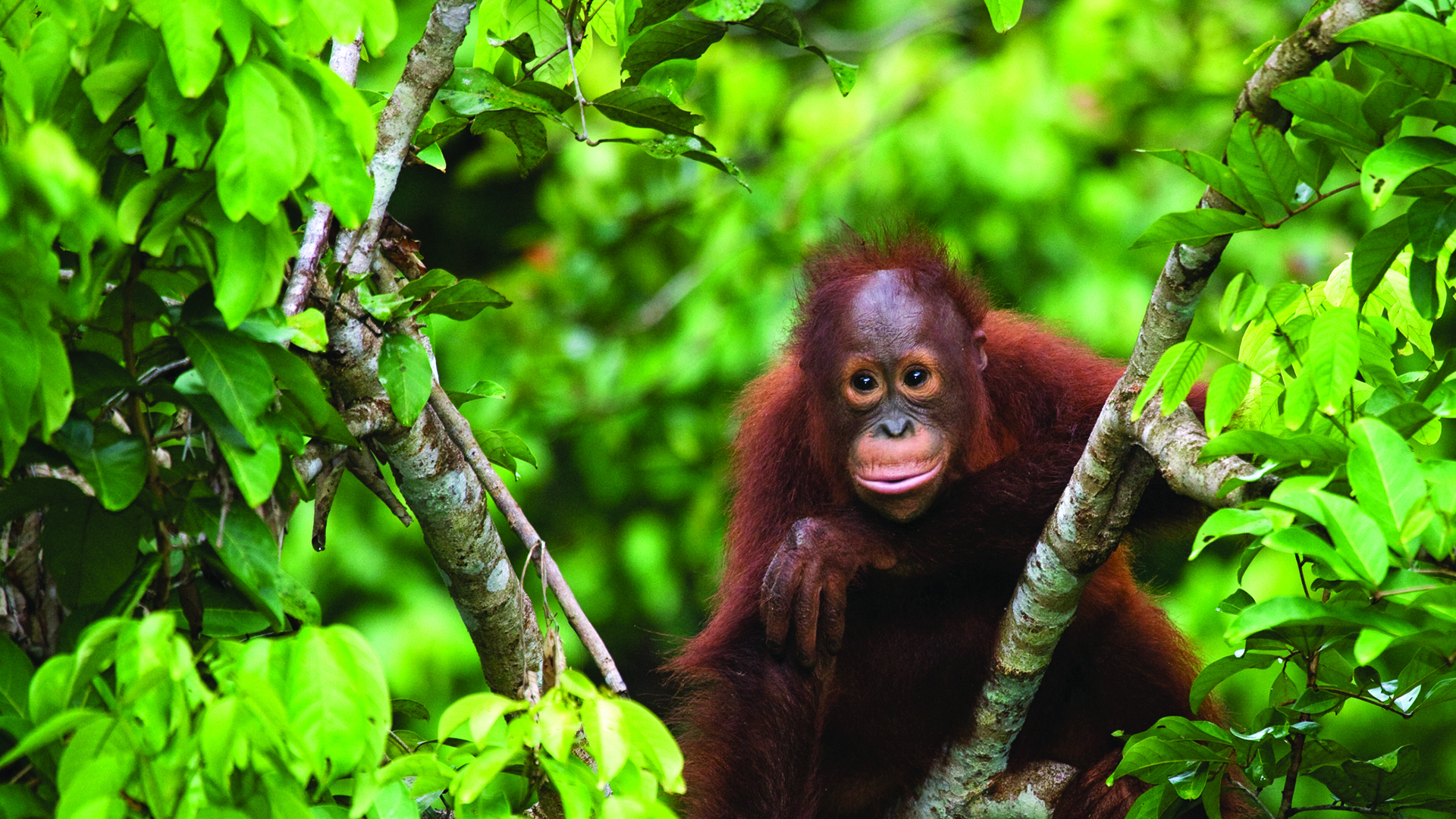
Pongo abelii, Pongo tapanuliensis, Pongo pygmaeus
Orangutans help forests by distributing seeds in their dung, increasing the biodiversity of their habitat. Through their nest building each night, orangutans create gaps in the forest canopy, which allows light through, stimulating the growth of plants in the undergrowth. The new growth contributes to carbon sequestration and countering the impacts of climate change.

Bornean, Sumatran and Tapanuli orangutans are all Critically Endangered

Bornean orangutan: ~57,000* / Sumatran orangutan: ~13,000* / Tapanuli orangutan: fewer than 800*, making it the rarest great ape in the world. Last assessed 2016-17
* According to the International Union for the Conservation of Nature (IUCN)

Omnivorous – fruit, leaves, seeds, bark, flowers, honey, vines, shoots, insects, and, very rarely, meat

Tropical rainforests and swamp forest

Sumatran orangutan – Indonesia (Sumatera); Bornean orangutan – Indonesia (Kalimantan) and Malaysia (Sarawak, Sabah); Tapanuli orangutan – Indonesia (Sumatera)

Height – 1.1-1.4 metres, weight – 35-90 kg

Habitat loss and hunting
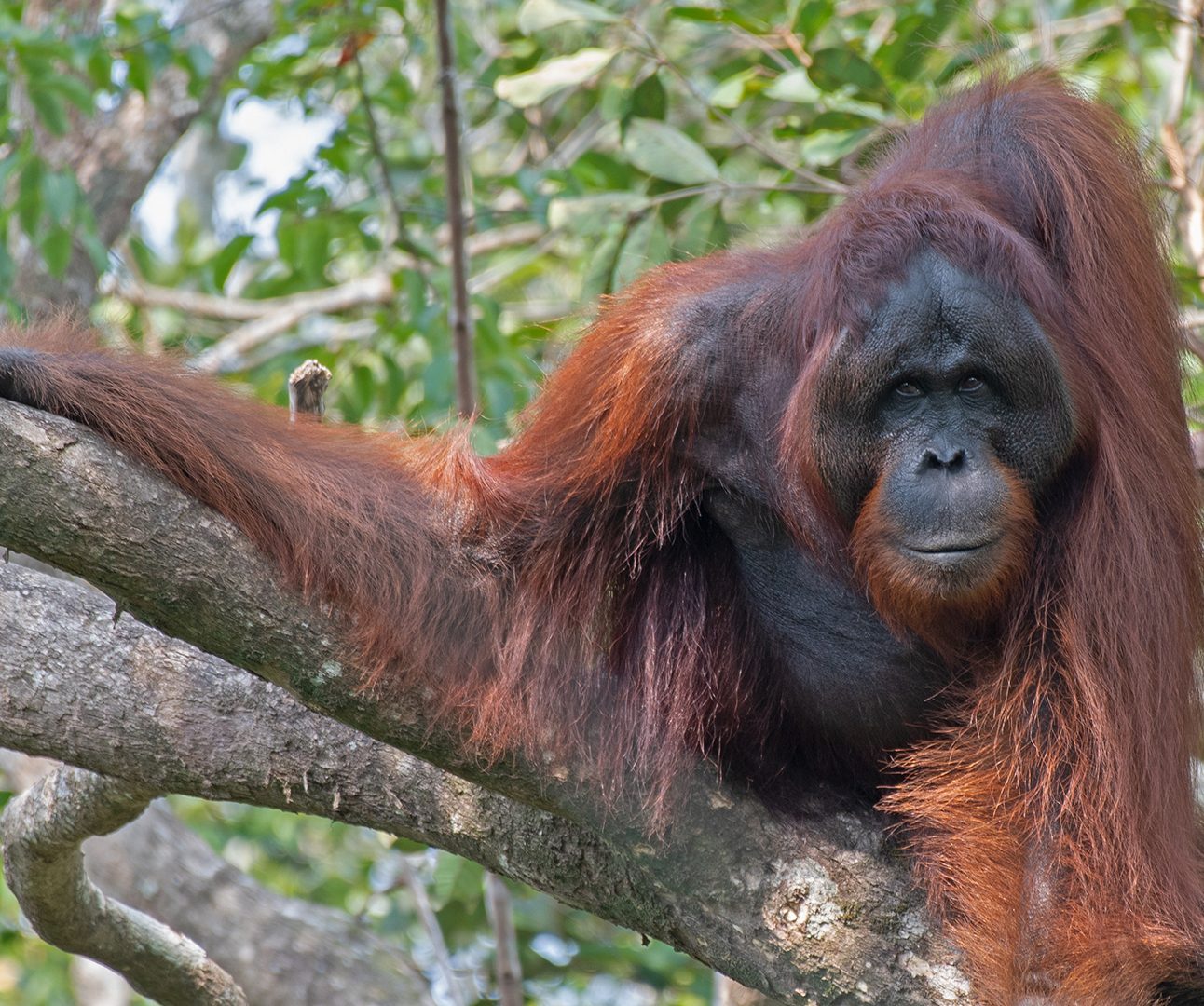
Of the four nonhuman great apes – gorillas, orangutans, bonobos, and chimpanzees – the orangutan is the only one who comes from Asia, with the rest living in Africa.
From 1996, there were only two recognised species of orangutan – the Sumatran and Bornean. However, in 2017 a third species was identified in the Batang Toru region of Sumatra, Indonesia – the Tapanuli orangutan.
Distinctive due to their reddish hair and long arms (up to two metres span), the name orangutan means ‘person of the forest’ in Malay. Their skin is a dark grey and their hair can range from an orange to red. Their legs are short, being just over half the length of their arms. Male orangutans are twice as big as females and have large cheek pads which are thought to give a reproductive advantage.
As the largest tree-living mammal, orangutans spend over 90% of their lives high up in the forest canopy of Sumatra and Borneo – 15-100 feet above the ground – sleeping in nests built from folded branches and leaves.
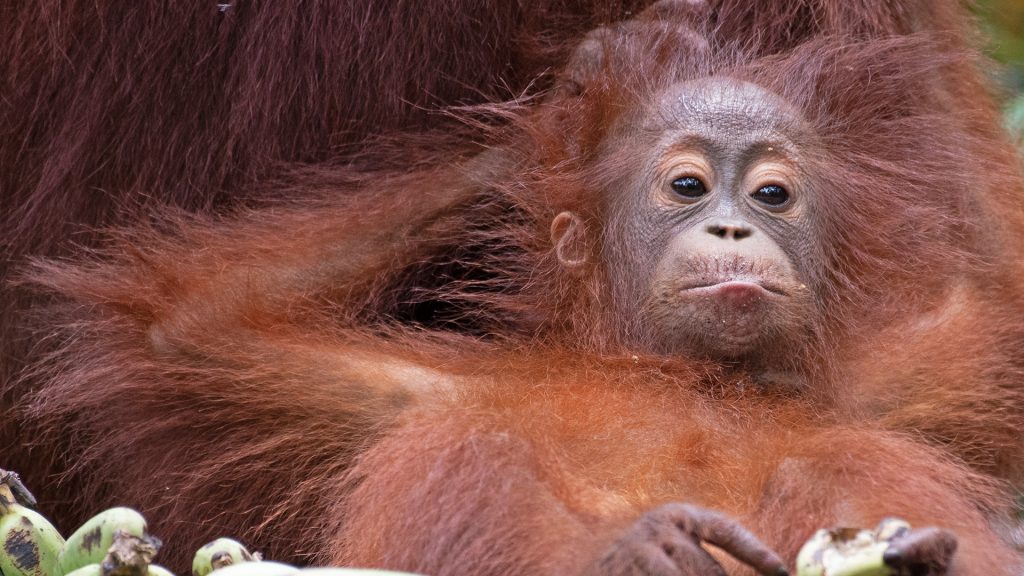
A young orangutan © Robin Claydon
Orangutans often use tools, for example sticks to help them catch termites and collect honey, and have also been seen holding large leaves over their heads as shelter during rainstorms.
They have a semi-solitary social system, thought to have evolved in response to the seasonal distribution of fruit and the absence of natural predators in the forest canopy. Females and their offspring have the closest bonds, although young females, particularly those that are related, may also socialise together. Young orangutans stay with their mother for up to 7-9 years, learning the crucial skills they will need to survive in the wild – longer than most other mammals. Adult males are the most solitary, and only socialise with sexually receptive females for brief courtships.
Females usually have their first baby at 15-16 years old, with an average 8 year gap between births, so they are extremely slow at reproducing. Following a pregnancy of around nine months, infants are dependent on their mothers for the first two to five years of their lives.
Orangutans are generally non-aggressive. There is also little evidence of play behaviour in the wild, except for between a female and her offspring.
They can communicate in several different ways using a variety of gestures and vocal signals to communicate about resources, territory, dominance and affection. The vocalisations of orangutans are diverse and can include grunts, screams, ‘long calls’ where males start with barking notes and then changes into heaving roars and tapers off into groans, kiss-squeaks, grumbles and ‘raspberries’.
Wild orangutan populations are under threat from extensive habitat loss and land use change due to logging, palm oil production, mining and agricultural expansion. Deforestation is by far the most serious threat to orangutans and, over the last three decades, an estimated 80% of irreplaceable orangutan habitat has been lost. Climate change is also driving the loss of orangutan habitat and the latest models predict that by 2080, we could have lost up to 81% of orangutan habitat.
Orangutans are illegally killed for their meat, and surviving infants found with their mother are then sold into the illegal pet trade. Recent studies indicate that, for Bornean orangutans, several thousand individuals are killed every year for consumption.
Orangutans can also come into conflict with people when they forage on crops. People may retaliate and kill orangutans.
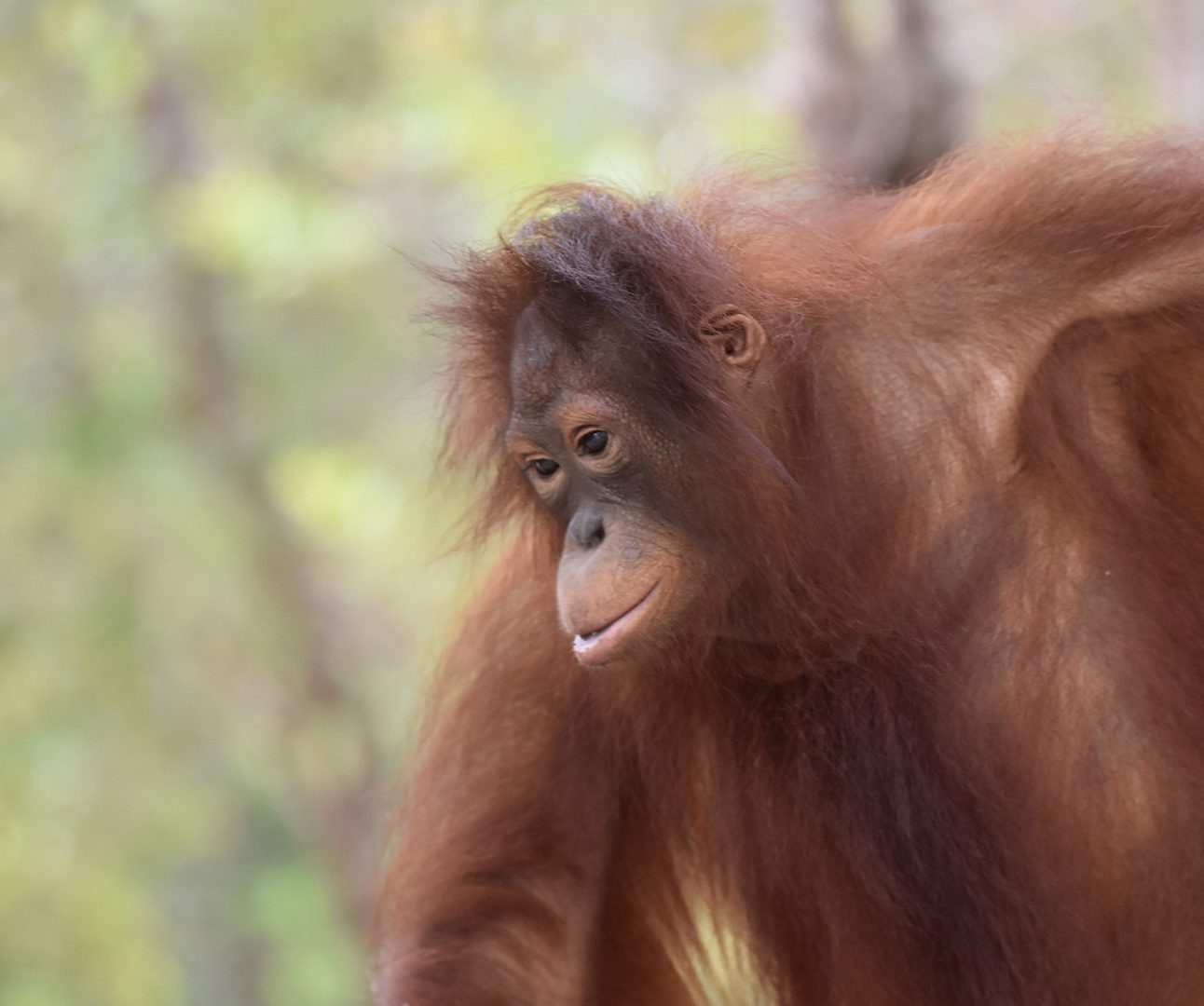
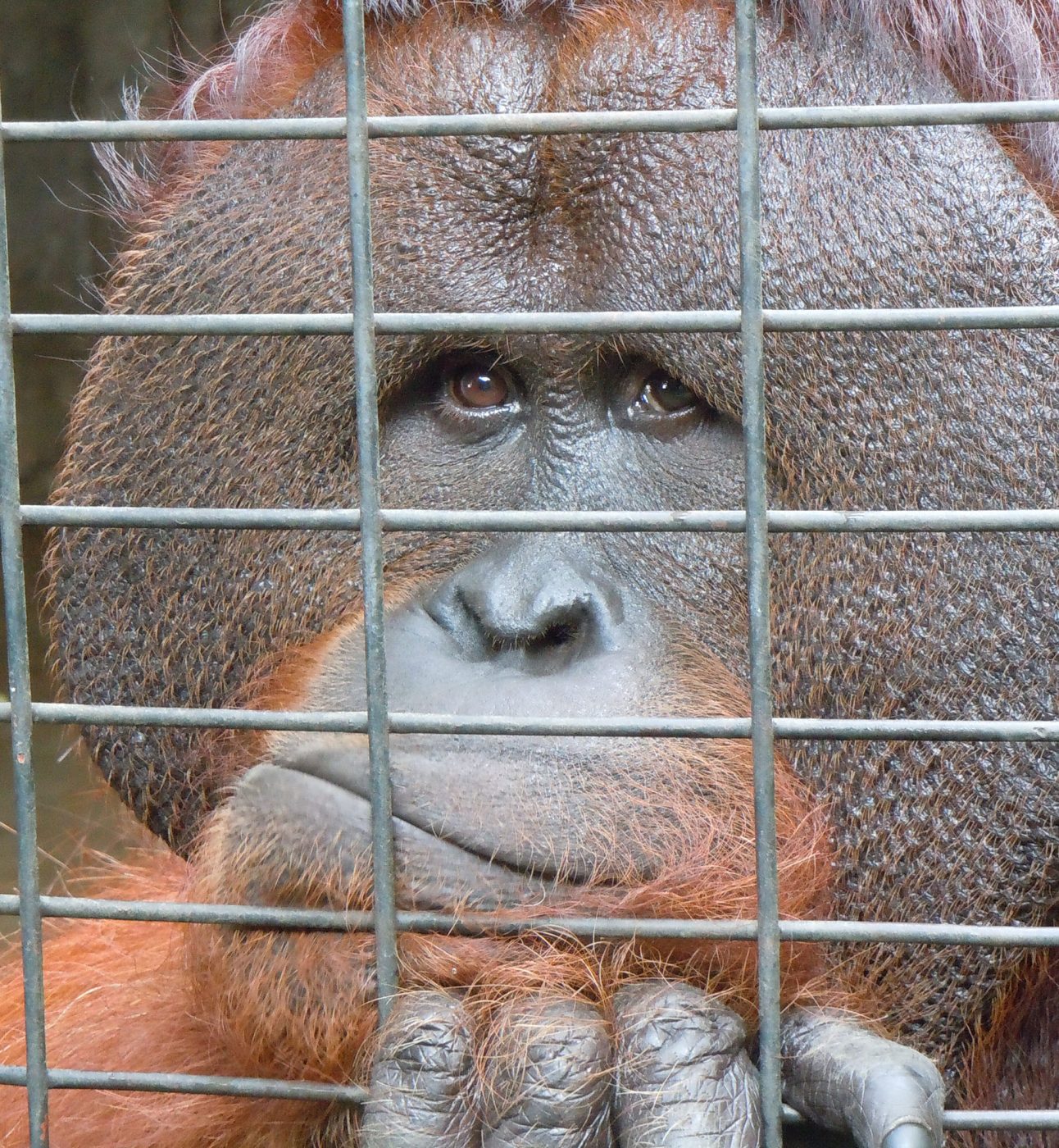
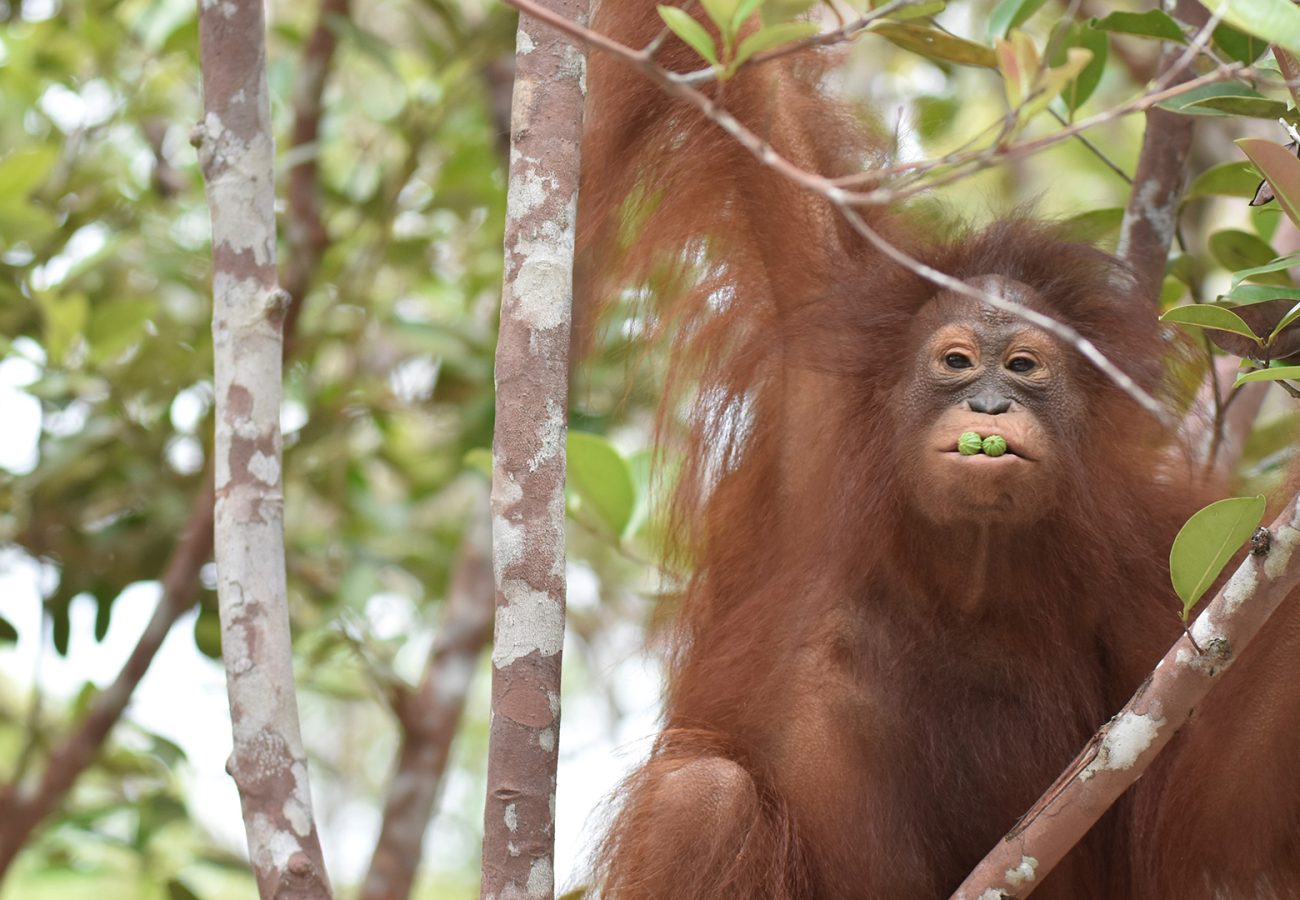
You can support Born Free's work to protect orangutans, by adopting rescued orangutan Timtom.